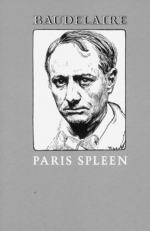
|
| Name: _________________________ | Period: ___________________ |
This test consists of 15 multiple choice questions and 5 short answer questions.
Multiple Choice Questions
1. What does the narrator drop on the glazier in "The Bad Glazier"?
(a) A picture frame.
(b) A brick.
(c) A flowerpot.
(d) A book.
2. In "The Widows", what do the poor do with their grief?
(a) They use it to avoid paying bills.
(b) They express it aloud.
(c) They turn it into art.
(d) They try to hide it.
3. How many devils visit the narrator of "The Temptations: Or, Eros, Plutus, and Fame"?
(a) Six.
(b) Five.
(c) Four.
(d) Three.
4. In "The Double Room", what does the narrator call the woman on the bed?
(a) Diva.
(b) Goddess.
(c) Idol.
(d) Star.
5. What word does Baudelaire use to describe clouds in "The Foreigner"?
(a) Dramatic.
(b) Dark.
(c) Wonderful.
(d) Painful.
6. What does the hair feel like in "A Hemisphere in Her Hair"?
(a) Flax.
(b) Heavy.
(c) Silk.
(d) Waves.
7. Why does the narrator follow the woman around all day in "The Widows"?
(a) He thinks he knows her.
(b) He is fascinated with her.
(c) She asks him to.
(d) She owes him money.
8. How is "The Foreigner" organized?
(a) In chronological order.
(b) As a letter.
(c) As a series of questions.
(d) In alphabetical order.
9. Why does the narrator offer food to the strange man in "Cake"?
(a) Because he says he has a child who is hungry.
(b) Because he pays for it.
(c) Because he looks like he needs it.
(d) The strange man just takes the food.
10. In "The Old Woman's Despair", why does the woman visit the baby?
(a) To bless him.
(b) To bring him joy.
(c) To feel less lonely.
(d) To make sure the mother is ok.
11. In "The Wild Woman and the Little Mistress", what does the narrator describe as being in an iron cage?
(a) Himself.
(b) All women.
(c) Faith and beauty.
(d) A hairy monster.
12. What season does the poet reflect upon in "The Artist's Confiteor"?
(a) Spring.
(b) Winter.
(c) Fall.
(d) Summer.
13. In "To Arsène Houssaye", what does the author say reading Aloysius Bertrand made him want to do?
(a) Become a journalist.
(b) Copy his style.
(c) Write a novel.
(d) Change his career.
14. In "A Hemisphere in Her Hair", where does the poet see "the languor of long hours"?
(a) On a divan.
(b) In a bathtub.
(c) On her bed.
(d) In a park.
15. In "Crowds", what does the narrator give credit to for the people who stand out in a crowd?
(a) Fairies.
(b) Money.
(c) Religion.
(d) Good education.
Short Answer Questions
1. In "The Old Woman's Despair", to what does the old woman compare herself?
2. Why do the fairies in "The Fairies' Gifts" have to work quickly?
3. In "The Fool and Venus", what is the man dressed like a jester doing?
4. Why does the narrator of "The Temptations: Or, Eros, Plutus, and Fame" turn down the ability to have everything of wealth?
5. What does the strange man call "cake" in "Cake"?
|
This section contains 529 words (approx. 2 pages at 300 words per page) |

|




